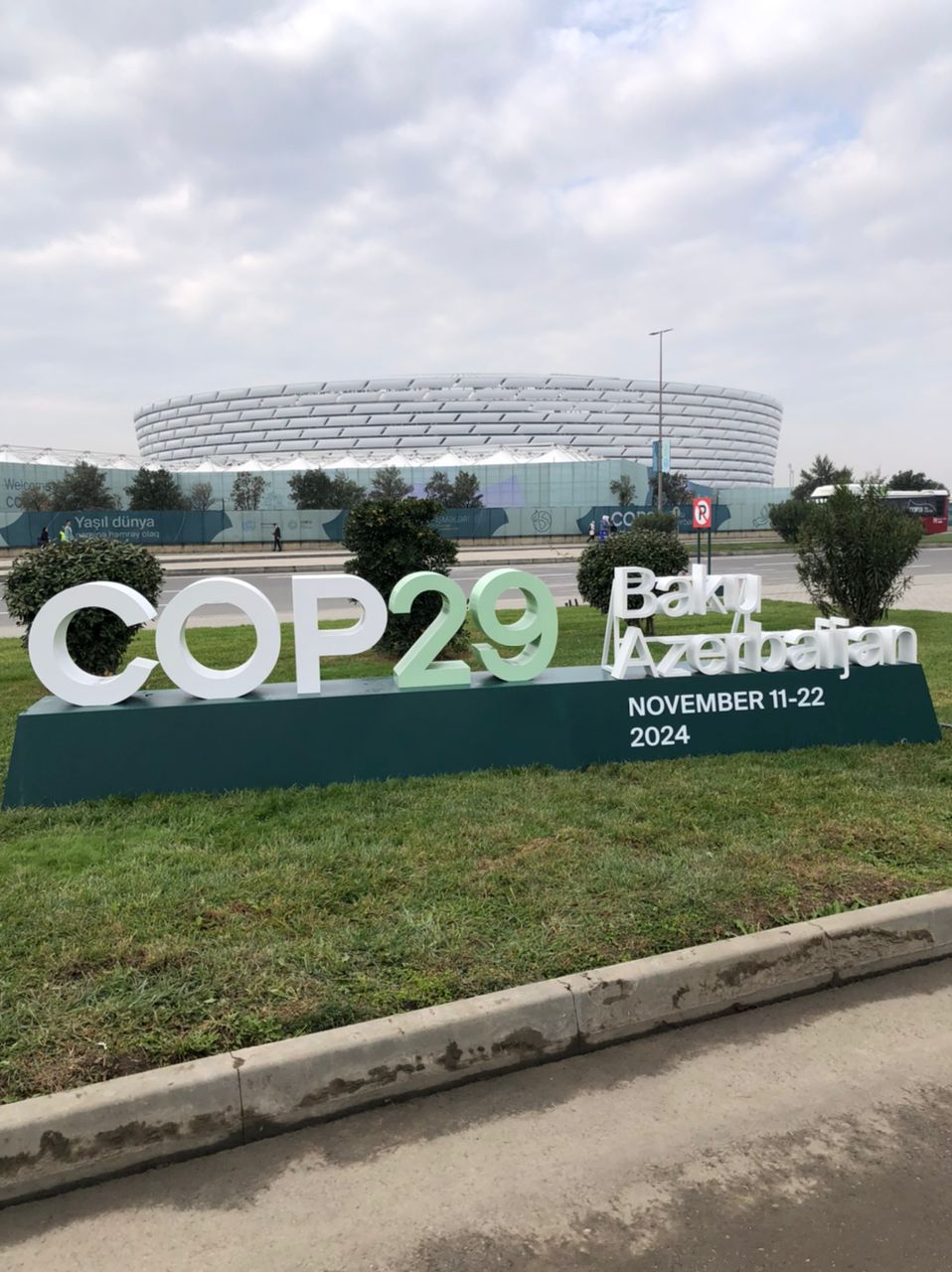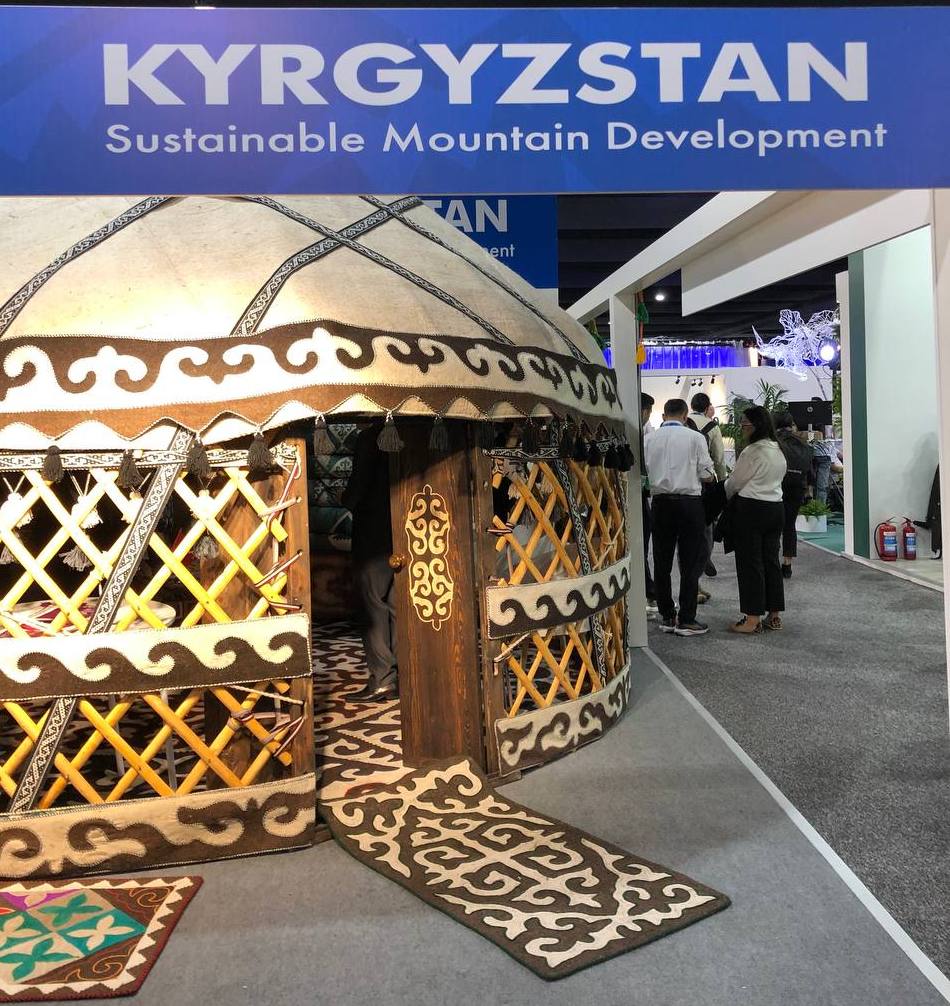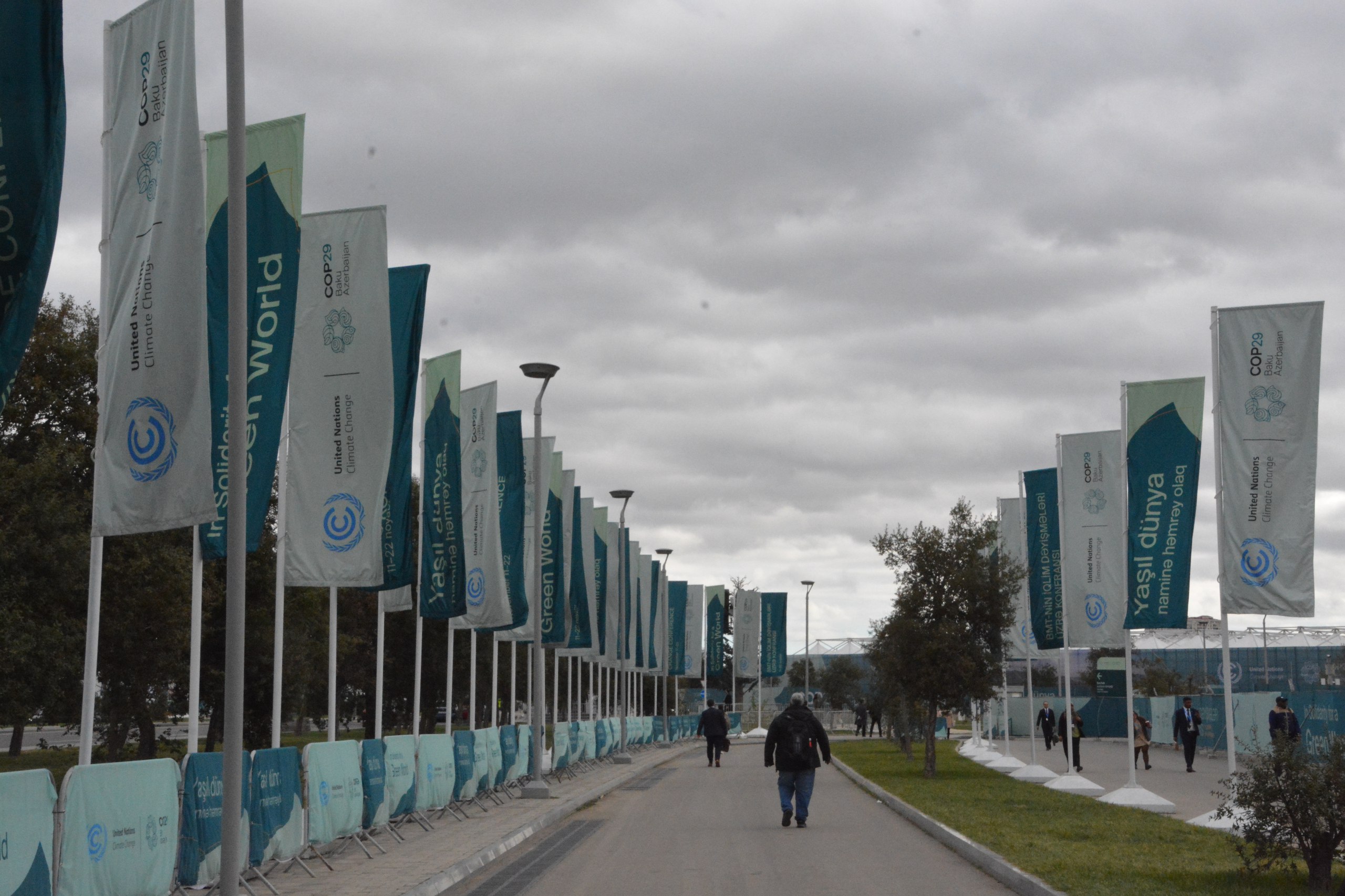COP29: What initiatives did Kyrgyzstan present at the climate conference
The COP29 conference is wrapping up in the capital of Azerbaijan. For two weeks, thousands of delegates from around the world visited Baku to discuss climate change issues and plans to reduce carbon emissions, as well as the transition to sustainable models of a green economy.
Hospitable Baku
COP29 is the 2024 UN Climate Change Conference. COP29 in Baku was one of the largest events in the history of Azerbaijan, with about 75,000 delegates from more than 190 countries gathering for the event. And the Olympic Stadium in Baku became the hub of all roads for two weeks.

These days, it is impossible to find free hotel rooms in Baku, and even apartments for rent in the city are rented several months in advance. And so some had to live in areas remote from the venue and get to the stadium with several transfers. But for the participants and journalists, buses ran around the city, picking them up from different parts of the city and bringing them to the stadium. By the way, these days, in all types of public transport for those who have received accreditation and have a badge – confirmation, travel is free. Also, at all bus stops and metro stations, volunteers were on duty who could tell you how to get anywhere in the city. And the hospitable residents of Baku were ready to help call a taxi. Interestingly, getting from one part of the city to another by car was not a problem, and, as taxi drivers said, it turns out that during such an important event, some of the city’s residents worked and studied remotely so that there were no traffic jams on the roads in the capital and it was more comfortable to move around.

Well, at the stadium, near the media center, food courts were organized, and you could have lunch right there, without interrupting your work process. True, of course, snacks here were more expensive than in stores. For example, you could buy a sandwich for 15 manat, in coffee – for 12.
Also, within the framework of the conference, the countries presented their national pavilions, and ours attracted the admiring glances of visitors, because at the entrance there was a yurt and everyone wanted to go inside and take a photo next to it. I admit, it is pleasant to receive enthusiastic exclamations from foreign colleagues: your country’s pavilion is the most unusual and beautiful!

Meanwhile, the national pavilion is, without exaggeration, a significant event for the country, since it is presented at such a high level for the first time. The Kyrgyzstan pavilion also became a platform for exchanging experience and knowledge on issues of sustainable development, transition to a green economy and solving climate problems. It presented projects aimed at improving the state of ecosystems, protecting water resources, as well as developing renewable energy sources and sustainable agriculture.

In addition, the Kyrgyzstan pavilion presents various types of products – natural honey, the taste of which is famous far beyond the borders of the country, kurut, sweets and national drinks.
Concluded contracts and agreements
In the first few days of COP29, there were speeches and meetings of heads of state. In his speech, President of Kyrgyzstan Sadyr Japarov noted that our country has initiated a mechanism for exchanging external debt for climate and sustainable development projects. And also that in accordance with nationally determined contributions, the country plans to reduce emissions by 16% of the emissions level under the “business as usual” scenario by 2030, and by 44% with international support. Carbon neutrality is planned to be achieved through the development of renewable energy sources, increased energy efficiency, reduced coal consumption through gasification, reduced losses in the transmission and distribution of electricity, improved heating systems in cities and increased public awareness of energy mitigation.
On the remaining days, key events were concentrated in the delegation pavilions. Kyrgyzstan, for example, presented measures for sustainable development of the labor market at COP29, taking into account climate change.
“A just transition must be socially responsible, covering the protection of workers and vulnerable groups. This requires retraining the workforce to adapt to new technologies for creating jobs in the green economy, supporting vulnerable groups, including youth, women and older people. And developing green workplace standards for businesses,” he said.
COP 29 also raised the issue of health of residents of mountainous regions, which are highly susceptible to climate change.

In our country, 94% of the territory is located at an altitude of over 1,500 meters, which creates unique but difficult conditions for the life and health of the population. Increasingly frequent climate changes aggravate existing problems, including an increase in the frequency of extreme weather events (droughts, floods, sharp temperature fluctuations), which negatively affects the health of the population.
Particular attention is paid to high-altitude pulmonary hypertension, which affects 14-20% of the country’s population. Climate change increases nutrient deficiencies and the prevalence of micronutrient deficiency diseases, which requires adaptation measures in the healthcare system.
Deputy Minister of Natural Resources, Ecology and Technical Supervision
Asel Raimkulova noted that our country’s agenda is sustainable development of mountain regions. And now we are already seeing the consequences – emergency situations, problems in the areas of biodiversity, energy, water resources and health care. And although our country has little impact on the environment, at the same time, in the conditions of a changing climate, we are subject to the consequences, because we are located in a mountainous area.
Special Representative of the President of the Kyrgyz Republic for the implementation of the Five-Year Action for the Development of Mountain Regions Dinara Kemelova told the Akchabar correspondent that the period 2023-2027 has been declared a Five-Year Action for the Development of Mountain Regions in Kyrgyzstan.
“2022 was declared the International Year of Mountains, and in the same year we initiated a resolution on sustainable mountain development. We adopted a special Roadmap for the implementation of the Five Years of Action for the Development of Mountain Regions. And within the framework of this map, we are actively working. Now Kyrgyzstan is promoting a number of initiatives, in particular, we want to draw the attention of the world community to the problems of mountain regions and the preservation of mountain ecosystems. It is the inhabitants of mountain regions who are most vulnerable to climate change because they already do not have access to infrastructure, they live in remote areas, it often happens that there is no access to healthcare, they must travel to district centers or cities to receive some government services there. But, in addition to difficult living conditions, climate change complicates their lives even more,” she says.
She also noted that the issue of ensuring food security is very acute, since the country is experiencing degradation of mountain pastures, again due to climate change.
“We also raise these issues, for example, we recommend introducing drought-resistant seeds or, conversely, varieties that will be resistant to sudden temperature changes,” Kemelova noted.
There was also a presentation on the energy sector of Kyrgyzstan, a model of large hydroelectric power plants was demonstrated, and a video was shown about a major project aimed at preventing energy security.
“As you know, we all know that climate change is happening all over the world. These changes will also affect the energy sector. Water shortages are becoming increasingly noticeable. However, the energy sector of Kyrgyzstan has high potential. Therefore, for the purpose of energy security, we are implementing a number of large-scale projects. I would like to note that the average annual duration of sunlight in our country is 2100-2900 hours, and the annual radiation is 1700 kW/m2. The potential of the Naryn River and small hydroelectric power plants on 172 rivers and watercourses is 258 MW of capacity, which can generate 5-8 billion kWh of energy, and the potential of wind energy is 2 billion kWh. The state provides incentives for the implementation of renewable energy projects. And we believe that energy cooperation is the driving force behind the development of green energy,” the Minister of Energy said.
By the way, the clean energy charter within the framework of the Economic Cooperation Organization, the agreement between the Ministry of Energy and GIZ on the implementation of the project “Renewable Energy Sources in Central Asia” and the Roadmap for cooperation between the Ministry of Energy of the Kyrgyz Republic and Azerbaijan were signed in Baku.
What do gender issues have in common with climate change?
It is noteworthy that in addition to high-level discussions, the conference also raised issues that, at first glance, do not seem to be particularly related to climate. For example, what could gender issues have in common with climate change? It turned out that both areas are closely interconnected, and climate change directly affects gender issues. Nargis Kosimova, a doctor of philological sciences, professor, media trainer and eco-journalist, and founder of Ekolog.uz from Uzbekistan, conducted a study on how the climate affected gender issues.
“Few people know that climate change is directly related to gender, especially gender-based violence. How does this happen? Today, many environmental issues are becoming more pressing all over the world, including in Central Asia. These include, first and foremost, water shortages, land degradation, rising temperatures, loss of biodiversity, and many others. And women suffer from all of this. In 2023, we conducted a study, and out of almost 300 women surveyed, 72% said that the deteriorating environmental situation affects them and leads to domestic violence,” she says.
As Nargis Kosimova explains, in Uzbekistan, all rural women mainly live in areas where there is an acute shortage of water. Women and children usually carry water into the house. And if they have to go far for water, then women save on themselves. Water is spent on washing, on cooking. When surveyed, they answered that because they save water on themselves, they cannot constantly wash themselves properly, do all the housework on time, which is again related to the use of water. Therefore, they are often insulted or even hit. This could be a husband, mother-in-law or relatives.

“Unfortunately, we don’t have such large-scale studies in the Central Asian region. I would really like to find an opportunity and do a large study on our region, because the environmental problems in our countries are similar,” she says.
In addition, COP29 hosted events where young climate activists could express their opinions. For example, the Next COP Dialogue brought together young people from Azerbaijan, Kyrgyzstan, Kazakhstan, Tajikistan, Turkmenistan, Uzbekistan, Turkey and Hungary to talk about climate initiatives. This year, young people also united to prepare a statement from young leaders, which included practical recommendations for expanding access to environmental education and youth participation in the climate agenda. These recommendations were included in the international strategy for promoting a culture of sustainable development and involving children and youth in the climate agenda until 2030.

By the way, financing the fight against climate change was the central issue of the COP summit in Baku. And as stated in the Euronews story, at the UN climate conference, international financial institutions agreed to increase investments in the fight against climate change – from $75 billion to $170 billion annually.
https://www.akchabar.kg/ru/article/ekologiya-thsxkkaijhlukkpj/cop29-kakie-initsiativi-predstavil-kirgizstan-na-klimaticheskoj-konferentsii-gpwoyykpqcnjeofu

